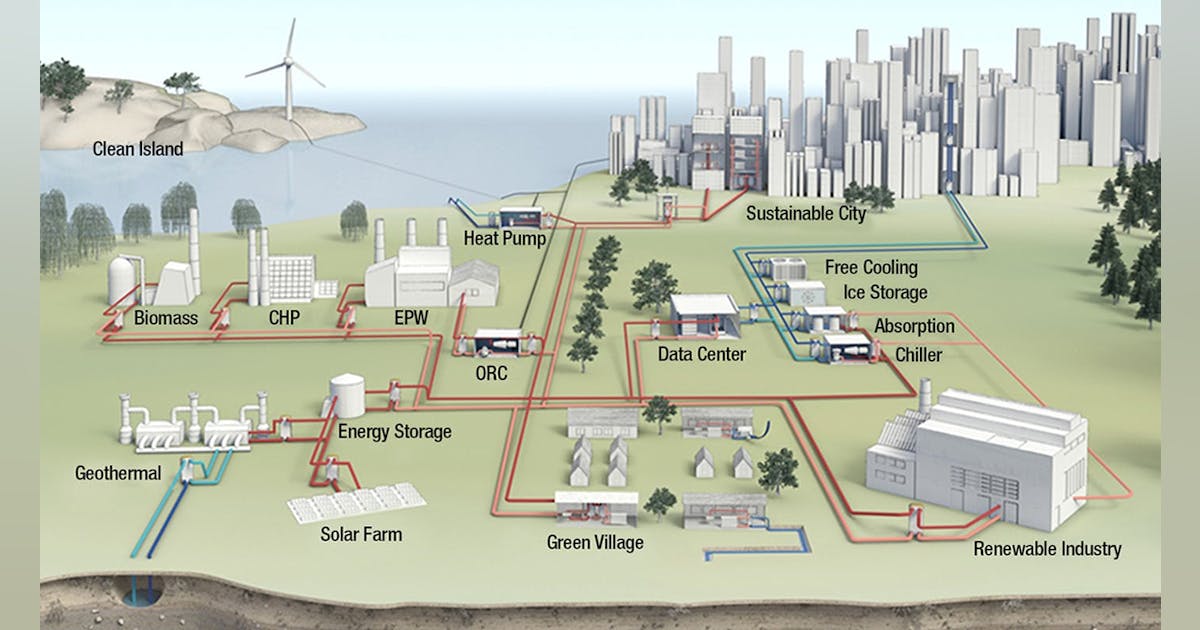Industry experts have been shouting from the rooftops for some time now about the benefits of district energy—those same rooftops which can house sustainable energy such as solar photovoltaic (PV)/thermal energy equipment. In fact, the global market for district heating and cooling systems is expected to expand to over $754 billion by 2032, this according to Armstrong Fluid Technology.
The idea behind district heating is simple: centralize water heating across a large enough system and what is wasted energy in one part becomes free energy in another. Improving efficiencies by incorporating multiple heat sources is the key—coupling the aforementioned solar technology with geothermal, combined heat and power (CHP), heat pumps, waste heat recovery and fluid flow technologies, just to name a few. Driving the adoption of district heating are a growing number of organizations committing to net-zero targets.
“District energy has been around for many years on college campuses and major cities—all that is really changing is that we are now moving this into the residential market,” says Tony Furst, MSEd, CPD, LEED AP, RSEC Manager—US Application Engineering, Armstrong Fluid Technology.
How this works, says Furst, is that the basic infrastructure would be built by the purveyor, no different than the electric companies and gas companies. “Once the infrastructure is in place in a neighborhood, the customer pays to install the piping from the street to their house, and the purveyor provides the heat transfer unit (HTU), no different than your gas or electric meter now.”
Equation Shift
But how do we change the calculus in old-school thinking and move on from, “this is the way we’ve always done it.” “We need to explain that district energy is no different than buying electricity or gas from your local utility provider, and most people don’t understand that businesses have waste heat or excess cooling capacity that can be repurposed to reduce overall energy consumption,” says Furst.
